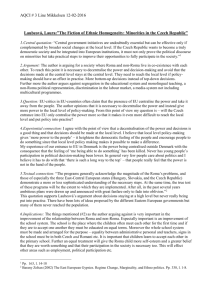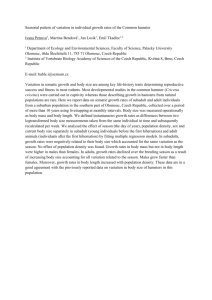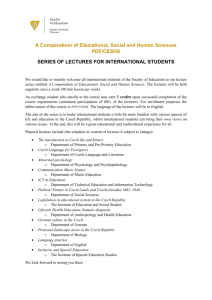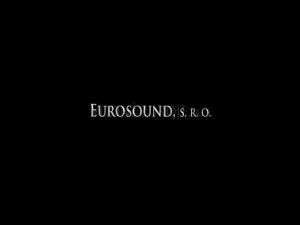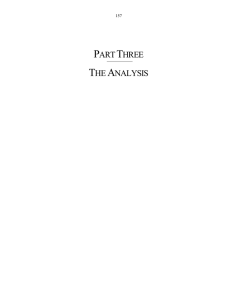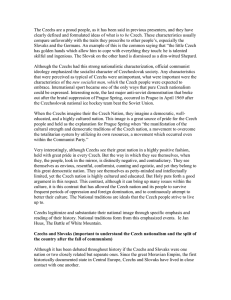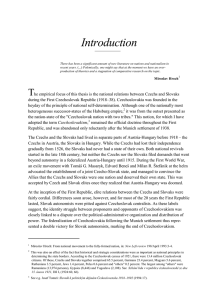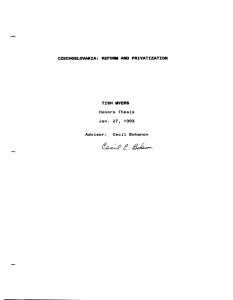UNIT 10 HOMOGENISATION OF CZECH SOCIETY
advertisement
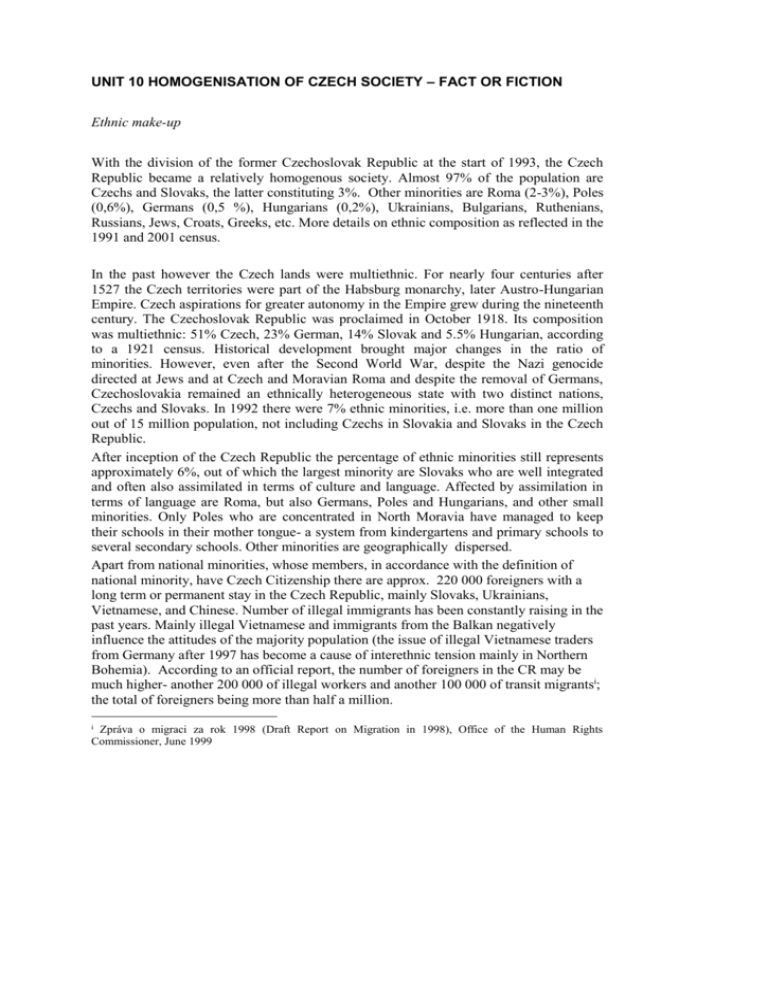
UNIT 10 HOMOGENISATION OF CZECH SOCIETY – FACT OR FICTION Ethnic make-up With the division of the former Czechoslovak Republic at the start of 1993, the Czech Republic became a relatively homogenous society. Almost 97% of the population are Czechs and Slovaks, the latter constituting 3%. Other minorities are Roma (2-3%), Poles (0,6%), Germans (0,5 %), Hungarians (0,2%), Ukrainians, Bulgarians, Ruthenians, Russians, Jews, Croats, Greeks, etc. More details on ethnic composition as reflected in the 1991 and 2001 census. In the past however the Czech lands were multiethnic. For nearly four centuries after 1527 the Czech territories were part of the Habsburg monarchy, later Austro-Hungarian Empire. Czech aspirations for greater autonomy in the Empire grew during the nineteenth century. The Czechoslovak Republic was proclaimed in October 1918. Its composition was multiethnic: 51% Czech, 23% German, 14% Slovak and 5.5% Hungarian, according to a 1921 census. Historical development brought major changes in the ratio of minorities. However, even after the Second World War, despite the Nazi genocide directed at Jews and at Czech and Moravian Roma and despite the removal of Germans, Czechoslovakia remained an ethnically heterogeneous state with two distinct nations, Czechs and Slovaks. In 1992 there were 7% ethnic minorities, i.e. more than one million out of 15 million population, not including Czechs in Slovakia and Slovaks in the Czech Republic. After inception of the Czech Republic the percentage of ethnic minorities still represents approximately 6%, out of which the largest minority are Slovaks who are well integrated and often also assimilated in terms of culture and language. Affected by assimilation in terms of language are Roma, but also Germans, Poles and Hungarians, and other small minorities. Only Poles who are concentrated in North Moravia have managed to keep their schools in their mother tongue- a system from kindergartens and primary schools to several secondary schools. Other minorities are geographically dispersed. Apart from national minorities, whose members, in accordance with the definition of national minority, have Czech Citizenship there are approx. 220 000 foreigners with a long term or permanent stay in the Czech Republic, mainly Slovaks, Ukrainians, Vietnamese, and Chinese. Number of illegal immigrants has been constantly raising in the past years. Mainly illegal Vietnamese and immigrants from the Balkan negatively influence the attitudes of the majority population (the issue of illegal Vietnamese traders from Germany after 1997 has become a cause of interethnic tension mainly in Northern Bohemia). According to an official report, the number of foreigners in the CR may be much higher- another 200 000 of illegal workers and another 100 000 of transit migrantsi; the total of foreigners being more than half a million. i Zpráva o migraci za rok 1998 (Draft Report on Migration in 1998), Office of the Human Rights Commissioner, June 1999
